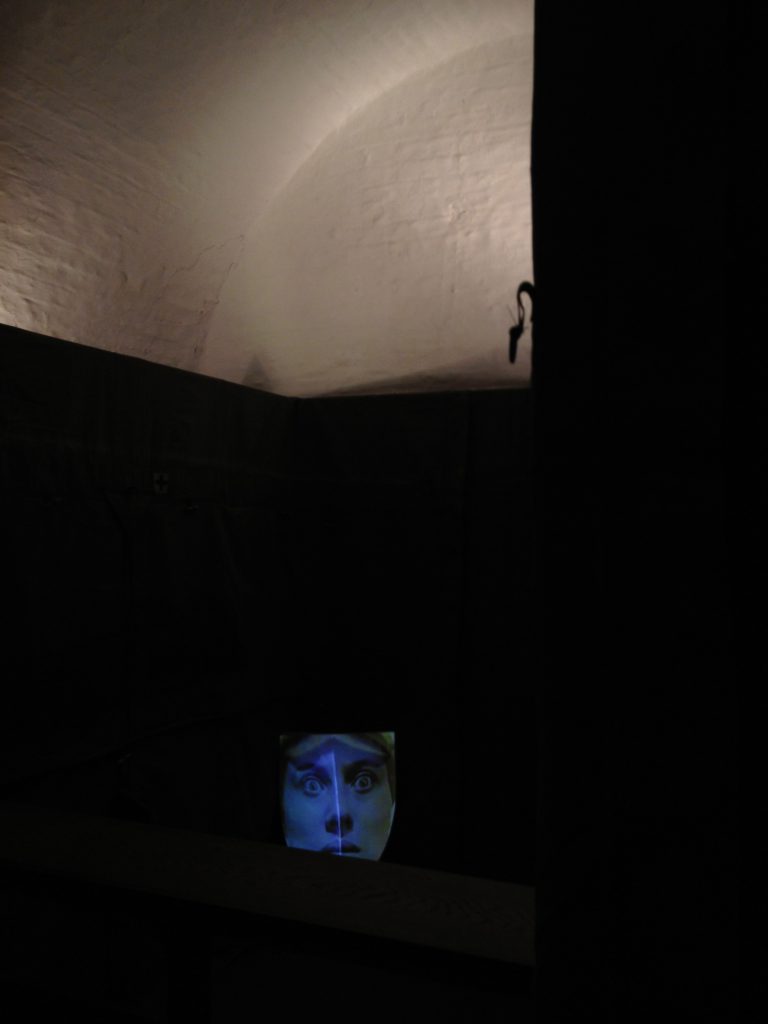Since graduating from the University of Sunderland with an MA in Fine Art in 2007 and another in Curatorial Practice in 2008, Louise Marchal has continued her creative practice as an artist alongside research for her recent book Finding Frances – the biography of Frances Darlington (sculptor).
This resulted in a body of work inspired by themes found through the research. Following investigations into Frances’s experimentation with polychromy, (the practice adding colour to sculpture), Louise recognised parallels in her own work.
Predominantly a painter she had begun to work with three dimensional objects which she made from card screen printed with her own designs. Monument to Obscurity, a work about the biography itself, featured both domestic and professional elements of Frances’s life and was bound with a tapestry cover which was copied from a painting by Frances’s mother who is also known to have been a talented painter. A lantern book, when fully open it forms a pentagram star, alluding to the idea of fame. Despite selling work internationally and winning significant public commissions, Frances died in relative obscurity.
In 1897, Frances was a promising young sculptor, one of the so-called golden era of the Slade where she was taught by Sir George Frampton (Lamia, Peter Pan). Her contemporaries included Gwen and Augustus John, William Orpen and Edna Clarke-Hall.
John and Orpen were founders of the Chelsea School of Art on Manresa Road, and this sprung the idea of the British notion of “artist” as having a geographical element which centred in Chelsea. From 1934-9 Frances also had a studio on Manresa Road at Wentworth Studios. Louise’s resulting work: I Stole the King’s Road comprises a small theatrical assemblage with a looped projection of a journey down the King’s Road incorporating its artists and cultural landmarks. Augustus John Leaves the Pheasantry existed as both artwork and promotional vehicle for the previous work. A limited edition of 28 unique screen prints, these featured an illustration inspired by the pantomime posters from the turn of the 20th century.
Now, with Arts Council funding Louise is to produce a piece in response to a single piece of Frances’s work, The St. George’s Police Orphanage World War One memorial held by Ripon Police Museum. A bas-relief sculpture with paint and gold leaf, it features St. George allied with St. Joan of Arc in an idealistic patriotism against “the infidel”. To contemporary eyes the piece provides some challenging material and through the installation the artist seeks to respond to the idea of memorial whilst exploring the shifts in social, gender and aesthetic norms.
 Prison & Police Museum
Prison & Police Museum